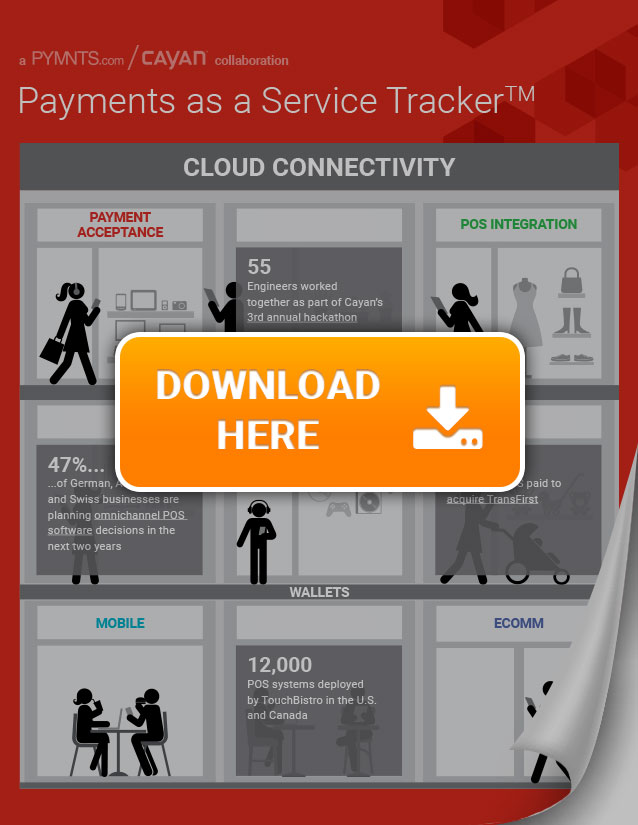QSRs Push Demand For ‘Service-Inclusive’ Payments

With some help from quick-service restaurants, full-service payments have transformed from a novel curiosity to an increasingly essential part of many retail businesses. In this month’s Payments as a Service Tracker™, PYMNTS spoke with Alex Barrotti, CEO and Founder of TouchBistro, about the rise of service-inclusive payments and what the future holds for this evolving industry. The tracker also includes the latest news from leading players in the space and a directory with profiles on 28 global Payments as a Service providers, including 10 new entries.
Five years ago, most retail and dining locations had essentially the same checkout process: a stationary POS terminal or cash register that required customers or employees to typically all check out from one stationary spot. Now, more merchants are turning to full-service payment solutions as the industry quickly grows and evolves, and merchants and consumers expect faster and more convenient payment methods. PYMNTS interviewed Alex Barrotti, CEO and Founder of TouchBistro, for this month’s Payments as a Service Tracker cover story, and he credited QSRs for powering much of the growth in the industry.
Here’s a sneak peek:
Barrotti said that because QSRs are often small, independent locations, they are able to be fast and decisive.
“They’re very fast movers and early adopters,” Barrotti said. “They can make decisions quickly and are cool at adopting new technology. It’s an exciting space, they don’t have very long sales cycles, they can evaluate the latest technology and make a decision fast.”
There was also the savings factor. Because platforms like TouchBistro utilize consumer electronics, the companies can adopt those POS systems much more cheaply than systems with thousands of dollars’ worth of components.
“If you have no system, and compare a $300 iPad to a $3,000 terminal, that’s an easy decision,” Barrotti said.
Those quick decisions to embrace new technology have paid off. Barrotti cited Steam Whistle Brewing, one of Canada’s largest independent breweries. The company installed the company’s iPad platform and used one of their three iPads as a mobile ordering terminal when crowds packed their bar. Steam Whistle, Barrotti said, sold 9,000 additional liters of beer over a six-month period thanks to the mobile-ordering system.
Around the world of PaaS
While QSRs may have powered the full service payments’ growth, other retailers are also now jumping head first into the space. Underscoring this point numerous companies unveiled new products and solutions over the past month, designed to give merchants the ability to turn transactions into meaningful consumer experiences.
Verifone, for one, premiered its newest POS, called Verifone Carbon. It features portable dual screens, will run on Android iOS and accept swipe, tap or dip payments. RedFin POS also debuted their new solution, the Shark Swipe mobile app for Android and iOS. The free app promises to help retailers accept mobile transactions using a Bluetooth card reader. Meanwhile, industry giant Square rolled out its Build with Square platform. The collection of APIs is designed to help retail sites accept online payments.
The April edition of the Payments as a Service Tracker™ features the latest news and analysis across the Payments as a Service industry. It also contains profiles of 28 players — including 10 new provider profiles — that not only enable payment processing of new and old technologies, but also integrate with other features that make the merchant’s experience easier.
To download the April edition of the Payments as a Service Tracker™ click the button below.
The PYMNTS.com Payments as a Service Tracker™, in collaboration with Cayan, is designed to give an overview of the trends and activities of merchant platforms that not only enable payment processing of new and old technologies, but also integrate with other features to improve the merchant’s experience, including customer engagement, security, omnichannel retail experience, analytics, inventory management, software and hardware management, and more.

